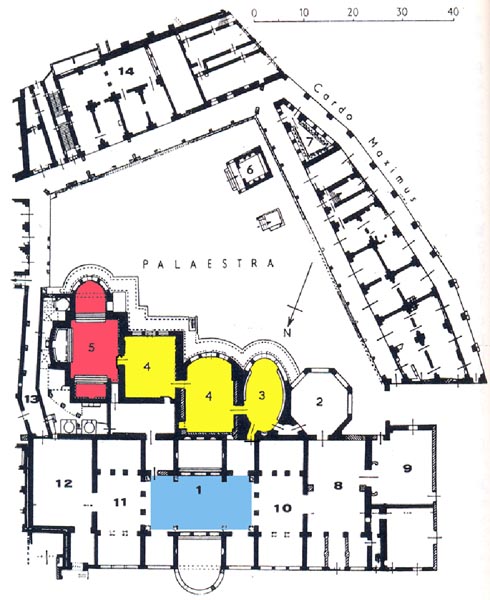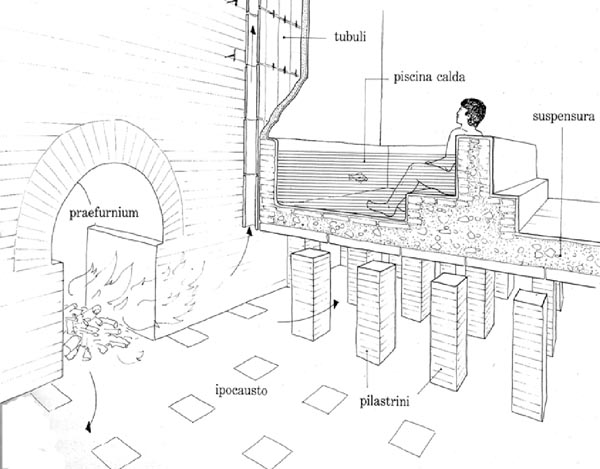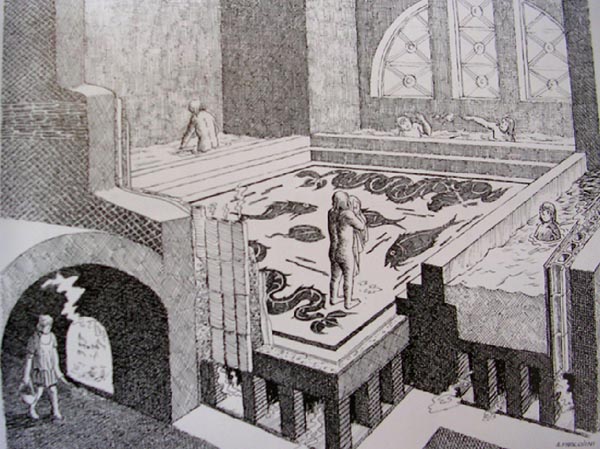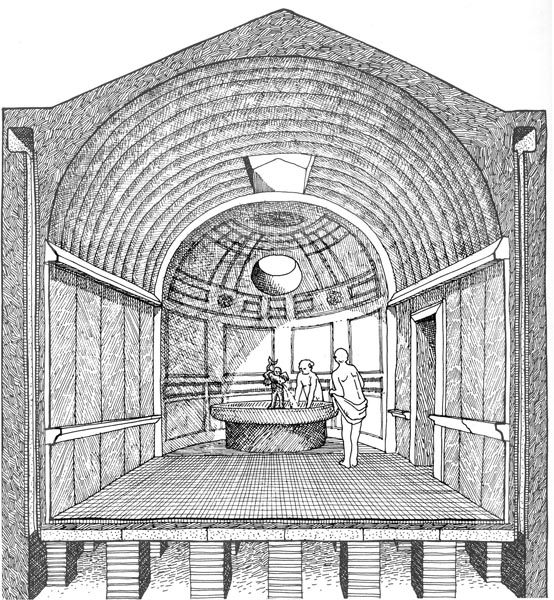Use of the Baths
The Roman Baths could exploit the natural hot thermal waters, or be supplied with normal water from and aqueduct, which was then heated. Their main function was to take care of personal hygiene, with the added curative function of thermal waters. Roman citizens did not have houses with toilets and running water, so personal hygiene was cared for at the end of the working day in the Baths, usable free of charge or paying a modest political fee. It was a moment when you relaxed, met friends, before dinner which was the main meal of the day (fig. 1).

Some of the Baths environments were heated by an insulation system: the inner walls were surrounded by other walls leaving a cavity: hot air from the ovens passed through this and ran under the floor supported by small pillars (suspensurae, figs. 2-3).


This room also has baths and basins with water to cool yourself with (fig. 4). In unheated rooms, the baths are for immersion in cold water.

Bibliografia
- J. P. ADAM, L’arte di costruire presso i Romani, Milano 1988.
- D. MACAULAY, La città romana, Roma 1978.
- M. PASQUINUCCI (ed.), Terme romane e vita quotidiana, Modena 1993.
- C. PAVOLINI, Ostia, Roma-Bari 1983.

 VR
VR